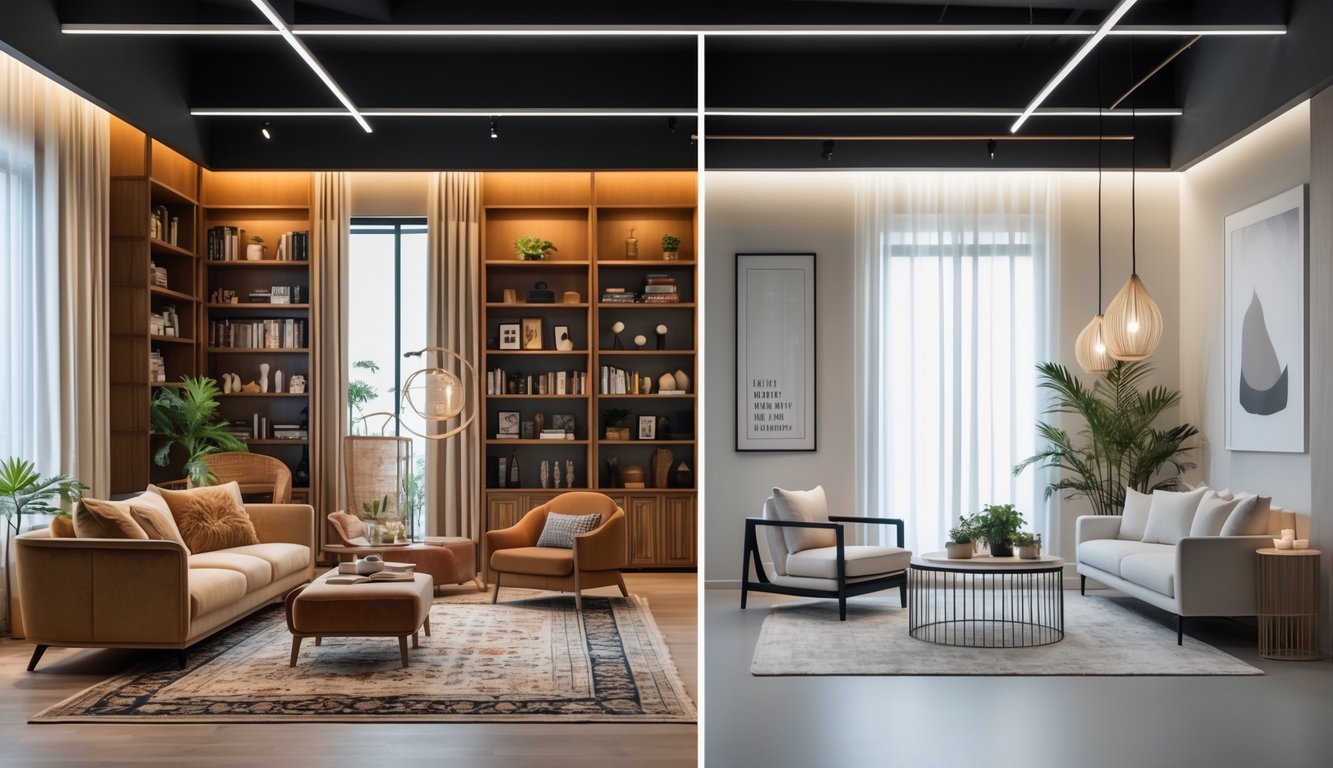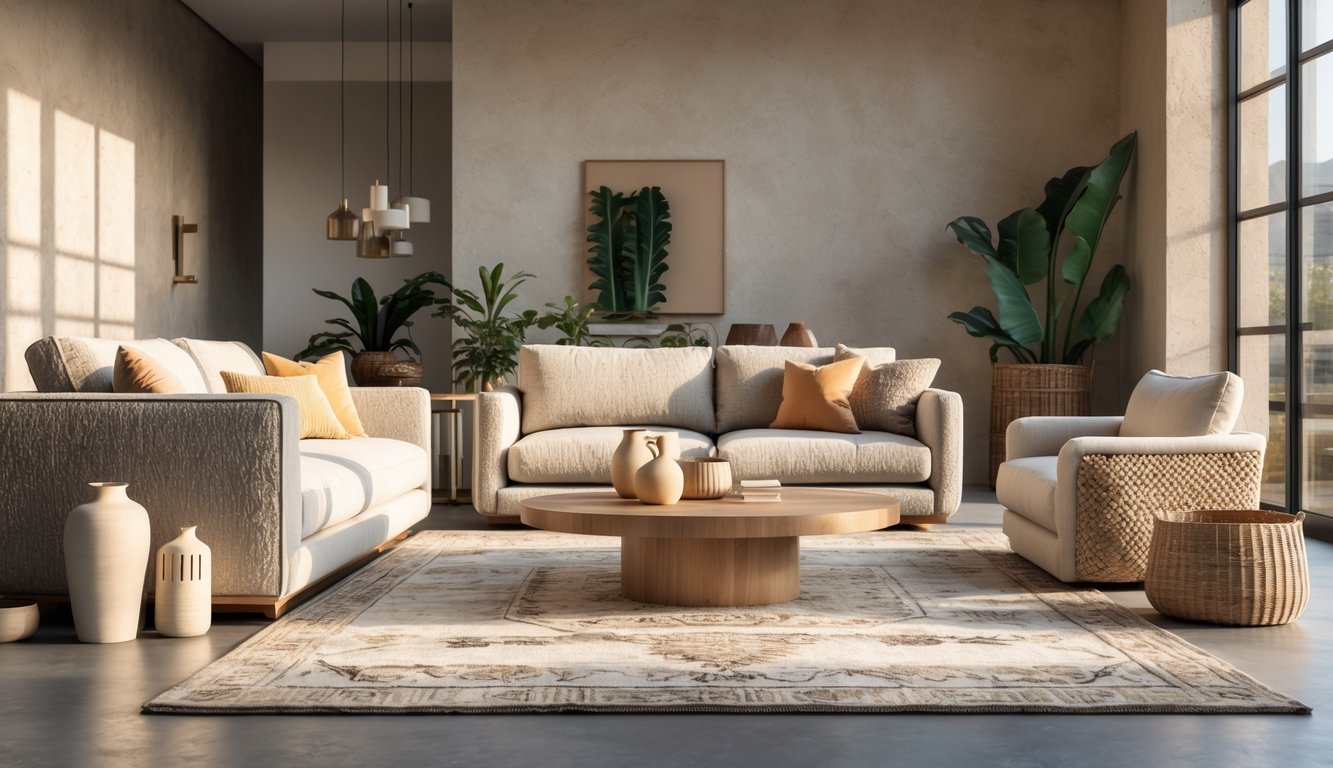
Maximalism: The Current Darling of Interior Design
Maximalism. It’s everywhere. Patterned rugs stacked on rugs, vintage everything, that pink Murano lamp I swore I didn’t need, and every friend suddenly obsessed with “curated chaos.” Is it a lifehack or just an excuse for clutter? Who knows.
Key Elements of Maximalist Decor
Let’s be real—the line between “wow” and “headache” is thin. But maximalism isn’t just random junk. It’s intentional layering, apparently. Bold colors—cobalt, emerald, whatever—clash in a way that somehow works. Or maybe we’re all just pretending. Pros at Persimmon Design call it “self-expression,” so my haphazard art print pile is suddenly cool.
Sculptural lamps, family photos, patterned textiles, stacks of books with no logic. Forget symmetry. It’s curated abundance, not hoarding (my mom disagrees), and the mix of old and new: thrifted candlesticks next to overpriced velvet chairs.
Even the weird Paris trinkets fit in—each piece matters, even if nothing matches. Texture everywhere: velvet, sisal, lacquer, glass. Designers mash up stripes, florals, checks, and swear it’s “warmth”—maybe because there’s a story in every corner.
How Maximalism Contrasts With Minimalism
Can’t help but snort at those “less is more” tours. Who lives like that? Maximalism is everything minimalism isn’t. Minimalism: blank space, soft neutrals, nothing out of place (and those beige sofas you can’t eat pizza on).
Maximalism is a punch in the face to uniformity. In 2025, it’s exploding because people are sick of sterile everything. Sometimes I wish someone would invent a maximalist-safe Roomba—tassels and glitter are a vacuum’s nightmare. Minimalism hides wires and labels; maximalism wants every mug on display.
Designers in Homes & Gardens say maximalist spaces let “personalities shine.” Maybe that’s why it’s winning. When friends visit, nobody asks about my coffee table—they want to know about the weird brooches on the wall. Sure, it’s a little messier, but it feels alive.
Popular Maximalist Features
Walk into a maximalist room and, bam, it’s like someone bottled the smell of a used bookstore and forgot to open a window. Is that paint? Is that dust? Nobody ever talks about the weird chemical tang. Anyway, the stuff that always pops up: vintage everything—those mid-century cabinets that probably have a wobbly leg, chairs nobody bothered to reupholster, collections that look like they were thrown together on a dare, and oh, obviously, a vase that’s trying too hard.
What’s up with “castlecore”? Suddenly everyone wants to live in a set from a BBC period drama—giant mirrors, curtains thick enough to block out your neighbor’s Wi-Fi, candelabras that drip wax everywhere, and tapestries that probably smell like soup. Clutter? Now it’s “intentional.” That pile of unread magazines? Not a mess—“visual interest.” Pattern overload is the new law. I tried the layered Persian rug thing (my neighbor swears it’s “designer”), but my house is so uneven I nearly broke my ankle.
Mirrored trays, brass bar carts, neon wall art—just a whole circus of highbrow meets thrift store. Sometimes there’s a Warhol print next to a painting of someone’s dead grandma, and for reasons I can’t explain, it works. Maybe there aren’t any rules. Maybe the whole point is to break all of them. Supposedly, design “experts” claim this maximalist chaos is sticking around. Good or bad? Who knows. I’m not betting on minimalism making a comeback anytime soon.
Trending Textures and Materials in Modern Homes

Spilled coffee on my marble counter again. Still looks better than the fake marble from my old apartment, so whatever. Every room these days feels like it’s begging to be touched—soft, bumpy, cold, or just plain weird under your hand. Texture isn’t just a trend, it’s some kind of competition. Bouclé and vintage stuff are everywhere, sneaking in and taking over where boring finishes used to be.
The Bouclé Boom
I swear, bouclé must’ve started as a joke at a Paris design show and now it’s the only thing anyone wants. Bouclé sofas: white, beige, impossible to clean, and somehow always the “it” piece. Salespeople push the “cloud-like softness” angle, but honestly, sometimes I just want a chair that doesn’t attract every crumb in the zip code.
And it’s not just at home—every hotel lobby, therapist office, and tiny overpriced apartment is drowning in this curly fabric. My friend who does upholstery says velvet is out, bouclé is in, and she’s got stats to prove it. I keep waiting for someone to admit it’s a nightmare with pets, but according to summer decorating trends, nobody’s slowing down. Maybe everyone’s just chasing that “touchable” feeling. Sometimes my armchair feels like a sheep, but hey, that’s still better than sticking to leather in July.
Mixing Old and New With Vintage Pieces
Why is everyone suddenly obsessed with beat-up dressers and tables that smell like grandma’s attic? It’s not nostalgia, it’s a performance. I can’t count how many “conversation piece” vintage finds I’ve seen jammed next to IKEA shelves and “mid-century” knockoffs. I bought a 70s mirror at a flea market just because the guy said it had “soul.” Did it? No clue, but now I have to dust it.
Designers love to say mixing real vintage with new stuff “adds story,” and apparently there’s a study that says rooms with at least one pre-90s thing feel 27% “warmer.” Makes sense, I guess, but it’s kind of hilarious how fast thrifted chairs end up on Instagram. And, let’s be real, half the “vintage” stuff is just new with fake scratches. Most of us can’t tell the difference anyway.